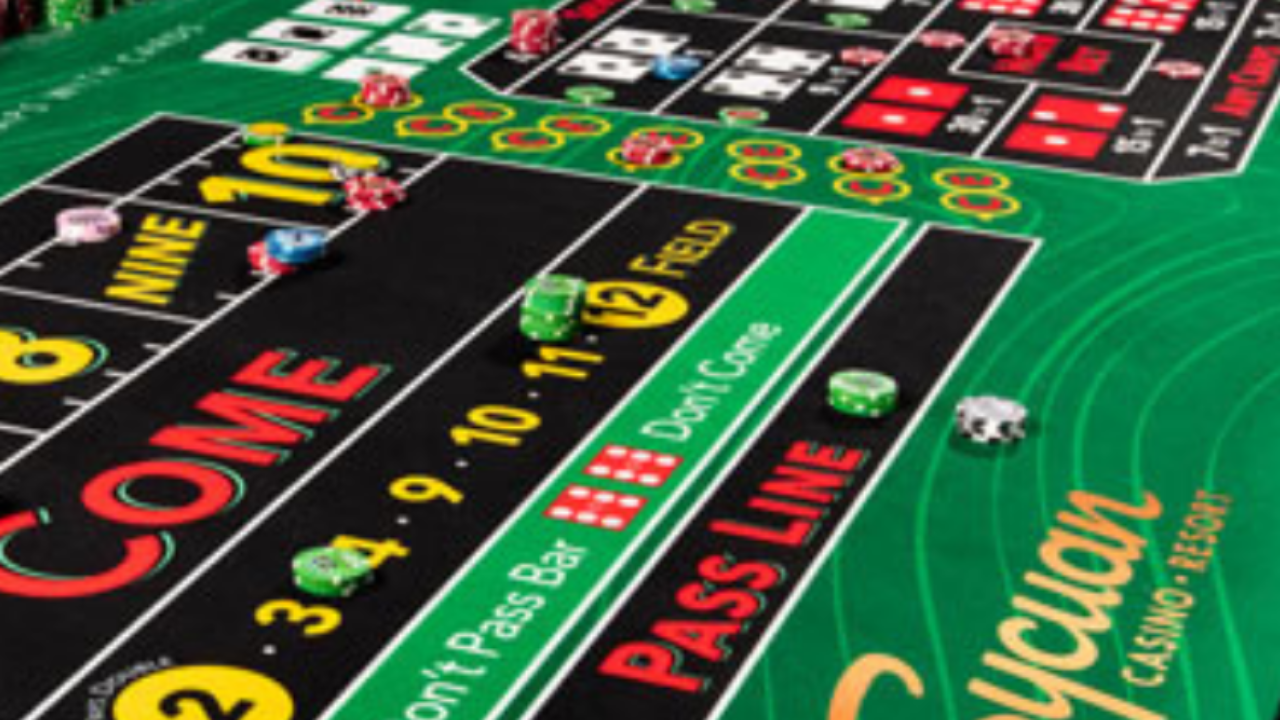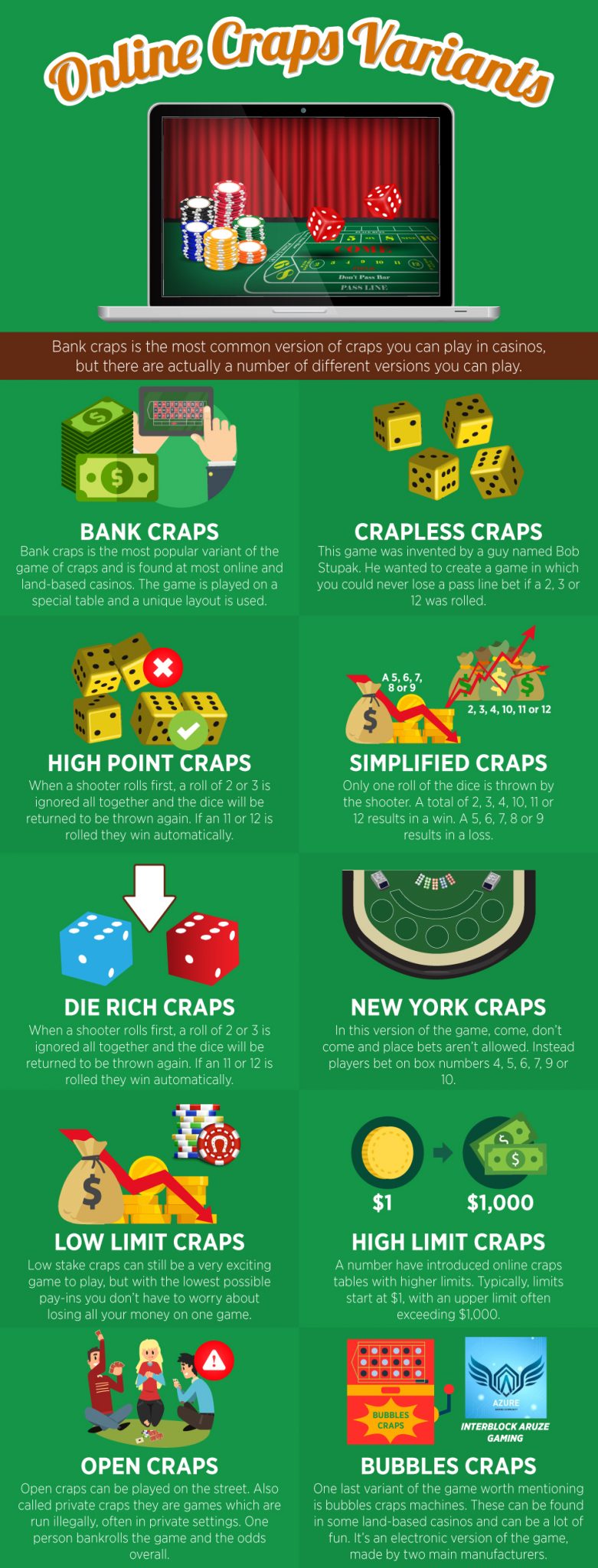Most Common Numbers In Craps
One of the most common lay strategies is to bet against the 4 and the 10, which are the least commonly rolled numbers in Craps. Place 6 and 8 Bets: 7 is the most common number in Craps, but this is closely followed by 6 and 8, making this bet a good option. No, and this is a common mistake players make. The more numbers you bet, the more likely you are to get get a hit. EXAMPLE 1: Consider betting $100 on red for a European wheel. You know you have around a 50% chance of winning, which sounds like good odds. But on closer inspection, you have a 48.65% chance of winning, and a 51.35% chance of losing.
I like the simplicity of craps. This might sound strange, because craps looks awfully complicated. But everything that happens at the craps table is based on rolling or throwing two dice.
With only six possible results on one die, the math can be pretty easy once you get the hang of it. It’s a little more advanced with two dice, but it’s still rather simple.
When you know the way a die works, you can use the math behind it to help you play better craps. Here are five mathematics-related facts about craps that you need to know.

1 – How Dice Work
The dice used in craps are the most common ones, each one with six sides. The game uses two of these, and this creates the mathematical base for craps.
When the two dice are rolled, each of them lands on a number from one to six. The two are added together for a final result. This means the lowest possible total is two, when both dice land on one, and the highest possible total is 12, when both dice land on six.
You probably already know all of these things, but do you understand how these things influence how you win and lose playing real money craps?
Most Common Numbers In Craps Players
In total, there are 36 possible combinations when you use two dice. Since there are six combinations or ways to roll a seven, you can determine the percentage chance of a seven on any single roll by dividing six by 36. The chance of rolling a seven is 16.67%.
Rolling a total of two only has one combination, so the chance of that is 2.78%. Here are the number of combinations for each total and the percentage chance for each.
| Dice Total | Combinations | % Chance |
| 2 | 1 | 2.78% |
| 3 | 2 | 5.56% |
| 4 | 3 | 8.33% |
| 5 | 4 | 11.11% |
| 6 | 5 | 13.89% |
| 7 | 6 | 16.67% |
| 8 | 5 | 13.89% |
| 9 | 4 | 11.11% |
| 10 | 3 | 8.33% |
| 11 | 2 | 5.56% |
| 12 | 1 | 2.78% |
2 – Odds Bet Facts
The odds wagers in craps are unique for a couple of different reasons. The first thing is because these betting options aren’t shown on most craps tables. In other words, there’s not a spot on the table that shows where you can place an odds wager.
The other unique thing about odds wagers is that they offer a true even house edge. In other words, there’s no house edge on any of the odds wagers.

If you understand how casinos work, you know that they don’t often offer wagers that don’t have a house edge. So, the question is, how do the casinos make money by offering a wagering opportunity that doesn’t have a house edge?
The answer is that you can’t place an odds wager unless you place a come-out roll wager first. The casino makes a profit on the come-out wagers, so they can afford to offer the odds wagers.
The odds wagers pay out based on the point. Once a point is set, you can place an odds wager, and if the point is rolled before a seven, you win. This is if you originally made a wager on the pass line.
If you originally bet on the don’t pass line, you win your odds wager if a seven is rolled before the point.
Here are the payouts for pass line odds:

| On 10 and 4 | 2 to 1 |
| On 9 and 5 | 3 to 2 |
| On 8 and 6 | 6 to 5 |
Here are the payouts on don’t pass line odds:
| On 10 and 4 | 1 to 2 |
| On 9 and 5 | 3 to 3 |
| On 8 and 6 | 5 to 6 |
3 – Pass Line Math
When you make a pass line wager, you win on the come out roll with an 11 or seven. This means that you win on eight of the 36 possible combinations, or 22.22% of the time. You lose on a roll of 12, three, or two. This is four out of the 36 combinations, or 11.11% of the time.
Other roll totals don’t immediately win or lose. Instead, they set the point. When you roll the point again before rolling a seven, you win. If you roll a seven before the point, you lose.
The pass line is the most common wager made by craps players on come-out rolls, but it’s not the best option when you’re trying to play with a low house edge. The best option for the house edge for craps players is to not play at all.
Craps has a built-in house edge, so no matter what you do, you’re going to lose if you play. The second-best option is a wager on the don’t pass line. More information about the don’t pass line is included in the following section.

4 – Don’t Pass Line Math
The don’t pass line wager is the opposite of the pass line wager in many ways. But it has a house edge of only 1.36%.
The truth is that the difference between 1.36% and 1.41% isn’t much, so if you’re more comfortable making the pass line wager, it doesn’t cost much money. In fact, it only costs you an average of 50 cents for every $1,000 that you wager to bet on the pass line instead of the don’t pass line.
You win on a roll of three or two, and lose on a roll of 11 or seven. This means you have a 22.22% chance of losing on the come-out roll. But if you survive the come-out roll, you have the best chance to win. A roll of seven, before the point is rolled again, wins this wager.
The only reason why anyone makes the pass line wager instead of the don’t pass line wager is because they don’t know any better or because of public pressure. A don’t pass line wager is often frowned on by superstitious gamblers because it’s viewed as betting against the shooter.
But the way you decide to play craps doesn’t have anything to do with anyone else at the craps table. You’re gambling with your money, so you can bet on anything you want.
5 – Every Other Wagering Option
You learned about the two main wagers at craps and the odds wagers. You can make many other wagers while playing craps, but none of them are as good as the three wagers you already know about. In fact, most of the other wagers have much higher house edges and should be avoided at all times.
I’ve read about many different craps strategies and betting systems that involve other wagers. But none of them actually increase your chances to win or decrease the house edge. No matter what you read or see, the only way to play craps with the lowest possible house edge is to stick with one of the two come-out roll wagers and place an odds wager.
Lottery Most Common Numbers

Conclusion
Now that you know exactly how the gambling math behind craps works, you can use it to help you win as often as possible. The math shows that there are only three craps wagers that you should ever make, so you can safely ignore all of the other wagering options.
Most Money Won At Craps
If you’re still not 100% confident in your knowledge of how dice or how the odds work, spend some more time going over the first section on this page. Understanding the odds and percentages is the key to winning more while playing craps.